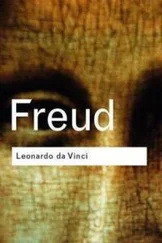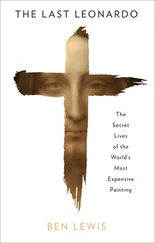Leonardo da Vinci - The Notebooks of Leonardo Da Vinci. Complete
Здесь есть возможность читать онлайн «Leonardo da Vinci - The Notebooks of Leonardo Da Vinci. Complete» — ознакомительный отрывок электронной книги совершенно бесплатно, а после прочтения отрывка купить полную версию. В некоторых случаях можно слушать аудио, скачать через торрент в формате fb2 и присутствует краткое содержание. Жанр: foreign_prose, foreign_home, visual_arts, foreign_antique, на английском языке. Описание произведения, (предисловие) а так же отзывы посетителей доступны на портале библиотеки ЛибКат.
- Название:The Notebooks of Leonardo Da Vinci. Complete
- Автор:
- Жанр:
- Год:неизвестен
- ISBN:нет данных
- Рейтинг книги:3 / 5. Голосов: 1
-
Избранное:Добавить в избранное
- Отзывы:
-
Ваша оценка:
- 60
- 1
- 2
- 3
- 4
- 5
The Notebooks of Leonardo Da Vinci. Complete: краткое содержание, описание и аннотация
Предлагаем к чтению аннотацию, описание, краткое содержание или предисловие (зависит от того, что написал сам автор книги «The Notebooks of Leonardo Da Vinci. Complete»). Если вы не нашли необходимую информацию о книге — напишите в комментариях, мы постараемся отыскать её.
The Notebooks of Leonardo Da Vinci. Complete — читать онлайн ознакомительный отрывок
Ниже представлен текст книги, разбитый по страницам. Система сохранения места последней прочитанной страницы, позволяет с удобством читать онлайн бесплатно книгу «The Notebooks of Leonardo Da Vinci. Complete», без необходимости каждый раз заново искать на чём Вы остановились. Поставьте закладку, и сможете в любой момент перейти на страницу, на которой закончили чтение.
Интервал:
Закладка:
Experiments with the mirror (208-210).
208
THE MIRROR.
If the illuminated object is of the same size as the luminous body and as that in which the light is reflected, the amount of the reflected light will bear the same proportion to the intermediate light as this second light will bear to the first, if both bodies are smooth and white.
209
Describe how it is that no object has its limitation in the mirror but in the eye which sees it in the mirror. For if you look at your face in the mirror, the part resembles the whole in as much as the part is everywhere in the mirror, and the whole is in every part of the same mirror; and the same is true of the whole image of any object placed opposite to this mirror, &c.
210
No man can see the image of another man in a mirror in its proper place with regard to the objects; because every object falls on [the surface of] the mirror at equal angles. And if the one man, who sees the other in the mirror, is not in a direct line with the image he will not see it in the place where it really falls; and if he gets into the line, he covers the other man and puts himself in the place occupied by his image. Let n o be the mirror, b the eye of your friend and d your own eye. Your friend's eye will appear to you at a , and to him it will seem that yours is at c , and the intersection of the visual rays will occur at m , so that either of you touching m will touch the eye of the other man which shall be open. And if you touch the eye of the other man in the mirror it will seem to him that you are touching your own.
Appendix:—On shadows in movement (211. 212).
211
OF THE SHADOW AND ITS MOTION.
When two bodies casting shadows, and one in front of the other, are between a window and the wall with some space between them, the shadow of the body which is nearest to the plane of the wall will move if the body nearest to the window is put in transverse motion across the window. To prove this let a and b be two bodies placed between the window n m and the plane surface o p with sufficient space between them as shown by the space a b . I say that if the body a is moved towards s the shadow of the body b which is at c will move towards d .
212
OF THE MOTION OF SHADOWS.
The motion of a shadow is always more rapid than that of the body which produces it if the light is stationary. To prove this let a be the luminous body, and b the body casting the shadow, and d the shadow. Then I say that in the time while the solid body moves from b to c , the shadow d will move to e ; and this proportion in the rapidity of the movements made in the same space of time, is equal to that in the length of the space moved over. Thus, given the proportion of the space moved over by the body b to c , to that moved over by the shadow d to e , the proportion in the rapidity of their movements will be the same.
But if the luminous body is also in movement with a velocity equal to that of the solid body, then the shadow and the body that casts it will move with equal speed. And if the luminous body moves more rapidly than the solid body, the motion of the shadow will be slower than that of the body casting it.
But if the luminous body moves more slowly than the solid body, then the shadow will move more rapidly than that body.
SIXTH BOOK ON LIGHT AND SHADE
The effect of rays passing through holes (213. 214).
213
PERSPECTIVE.
If you transmit the rays of the sun through a hole in the shape of a star you will see a beautiful effect of perspective in the spot where the sun's rays fall.
[Footnote: In this and the following chapters of MS. C the order of the original paging has been adhered to, and is shown in parenthesis. Leonardo himself has but rarely worked out the subject of these propositions. The space left for the purpose has occasionally been made use of for quite different matter. Even the numerous diagrams, most of them very delicately sketched, lettered and numbered, which occur on these pages, are hardly ever explained, with the exception of those few which are here given.]
214
No small hole can so modify the convergence of rays of light as to prevent, at a long distance, the transmission of the true form of the luminous body causing them. It is impossible that rays of light passing through a parallel [slit], should not display the form of the body causing them, since all the effects produced by a luminous body are [in fact] the reflection of that body: The moon, shaped like a boat, if transmitted through a hole is figured in the surface [it falls on] as a boatshaped object. [Footnote 8: In the MS. a blank space is left after this question.] Why the eye sees bodies at a distance, larger than they measure on the vertical plane?.
[Footnote: This chapter, taken from another MS. may, as an exception, be placed here, as it refers to the same subject as the preceding section.]
On gradation of shadows (215. 216).
215
Although the breadth and length of lights and shadow will be narrower and shorter in foreshortening, the quality and quantity of the light and shade is not increased nor diminished.
[3]The function of shade and light when diminished by foreshortening, will be to give shadow and to illuminate an object opposite, according to the quality and quantity in which they fall on the body.
[5]In proportion as a derived shadow is nearer to its penultimate extremities the deeper it will appear, g z beyond the intersection faces only the part of the shadow [marked] y z ; this by intersection takes the shadow from m n but by direct line it takes the shadow a m hence it is twice as deep as g z . Y x , by intersection takes the shadow n o , but by direct line the shadow n m a , therefore x y is three times as dark as z g ; x f , by intersection faces o b and by direct line o n m a , therefore we must say that the shadow between f x will be four times as dark as the shadow z g , because it faces four times as much shadow.
Let a b be the side where the primary shadow is, and b c the primary light, d will be the spot where it is intercepted, f g the derived shadow and f e the derived light.
And this must be at the beginning of the explanation.
[Footnote: In the original MS. the text of No. 252 precedes the one given here. In the text of No. 215 there is a blank space of about four lines between the lines 2 and 3. The diagram given on Pl. VI, No. 2 is placed between lines 4 and 5. Between lines 5 and 6 there is another space of about three lines and one line left blank between lines 8 and 9. The reader will find the meaning of the whole passage much clearer if he first reads the final lines 11—13. Compare also line 4 of No. 270.]
On relative proportion of light and shadows (216—221).
216
That part of the surface of a body on which the images [reflection] from other bodies placed opposite fall at the largest angle will assume their hue most strongly. In the diagram below, 8 is a larger angle than 4, since its base a n is larger than e n the base of 4. This diagram below should end at a n 4 8. [4]That portion of the illuminated surface on which a shadow is cast will be brightest which lies contiguous to the cast shadow. Just as an object which is lighted up by a greater quantity of luminous rays becomes brighter, so one on which a greater quantity of shadow falls, will be darker.
Читать дальшеИнтервал:
Закладка:
Похожие книги на «The Notebooks of Leonardo Da Vinci. Complete»
Представляем Вашему вниманию похожие книги на «The Notebooks of Leonardo Da Vinci. Complete» списком для выбора. Мы отобрали схожую по названию и смыслу литературу в надежде предоставить читателям больше вариантов отыскать новые, интересные, ещё непрочитанные произведения.
Обсуждение, отзывы о книге «The Notebooks of Leonardo Da Vinci. Complete» и просто собственные мнения читателей. Оставьте ваши комментарии, напишите, что Вы думаете о произведении, его смысле или главных героях. Укажите что конкретно понравилось, а что нет, и почему Вы так считаете.












